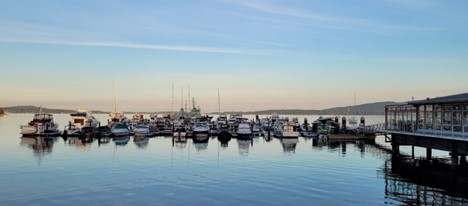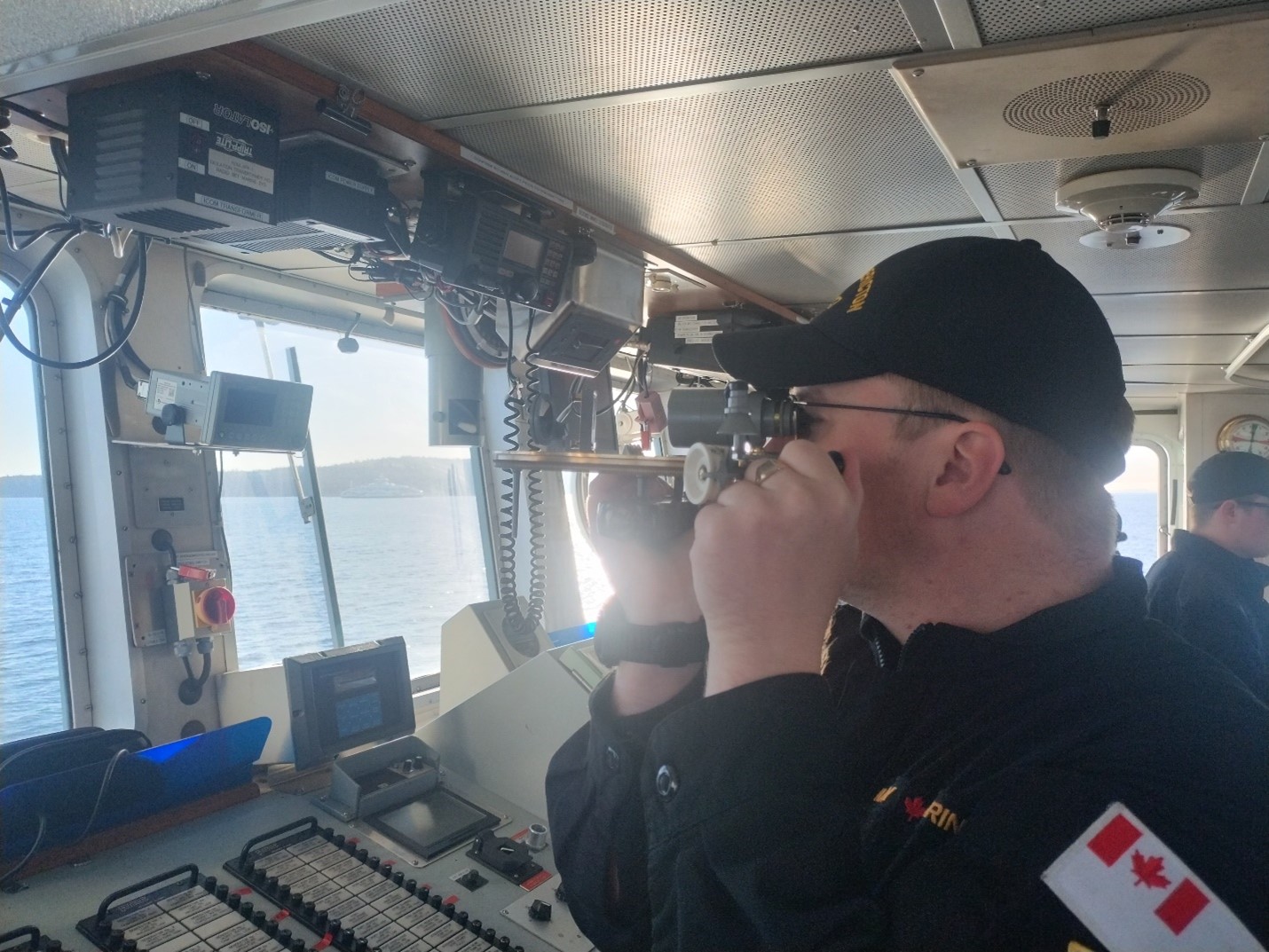Clearance Divers, Supporting the Fleet in Innovative Ways
October 24, 2025 - Royal Canadian Navy

Caption
YDT SOOKE berthed alongside Mill Bay Marina during the Fleet Diving Unit (Pacific) Naval Warfare Officer training deployment.

Caption
A Naval Warfare Officer student uses a sextant while navigating YDT SOOKE during the Fleet Diving Unit (Pacific) Naval Warfare Officer training deployment.
Fleet Diving Unit (Pacific) (FDU(P)) is used to supporting Canadian Fleet Pacific, but from September 22 to October 3, they took on a different kind of mission. The team sailed one of their dive tenders, Yard Diving Tender (YDT) SOOKE, to provide junior Naval Warfare Officers (NWOs) hands-on experience with atypical fleet platforms as they work to complete their 600 bridge watch hours, known in the Royal Canadian Navy (RCN) as NWO600. While on watch, the officers strengthened their bridge watchkeeping abilities, gaining confidence as professional mariners.
Built in 1990 to support range operations in Nanoose, SOOKE was modified later that decade for diving missions. While usually used by Clearance Divers, the experts in route clearing and mine countermeasures for the Canadian Armed Forces’ (CAF), SOOKE typically carry a crew of 12. For this sail, however, capacity was increased to 18 with help from FDU(P)’s engineering department and Fleet Maintenance Facility Cape Breton. A repurposed sea container, or “accommodation pod,” was installed on the deck space normally used for other equipment.
Six newly promoted Sub-Lieutenants (SLt) joined SOOKE for the two-week sail, developing navigation, seamanship, and ship-handling skills, and included the rare chance to manually steer the vessel during departures and drills. The hands-on experience helped them sharpen their “seaperson’s eye” early in their careers.
“This has been a great event with fantastic training quality. It allows us to build skills and work towards our NWO 600 hours,” says SLt Conal Evans, hailing from Vernon, BC. “It was an excellent opportunity to consolidate the skills I’ve learned and to develop myself as a bridge watchkeeper.”
The sail also provided an opportunity to work with the Canadian Coast Guard, recently welcomed into the Department of National Defence. Coast Guard member Tory Martin joined the SOOKE crew for a day and took part in scheduled activities.
“This was a small way to break-the-ice with our new colleagues” said FDU(P) Commanding Officer, Lieutenant-Commander Erik Poirier. “FDU(P) has capabilities that could be of use to the Coast Guard, particularly in the arctic, and they have capabilities and platforms that could help FDUs and the RCN for domestic operations.”
The voyage was also supported by members of the Naval Experience Program and fleet augmentees, who filled important roles on deck, in engineering, and in the galley. These sailors took part in ship-handling exercises and learned basic naval skills across different trades as they explore future career paths in the Navy.
“A secondary benefit to us at FDU(P) is that we got to sell Clearance Diving as an exciting career path to prospective officers and sailors,” says Poirier. “We have particularly stepped up our efforts to find fit, motivated, intelligent officers, now from any occupation in the CAF, who are ready to lead in this very specialized role within the Navy,” referring to recent change that opened clearance diver officer occupations CAF wide. This follows the opening of the Clearance Diver trade to all non-commissioned member trades in 2017.
The Clearance Diver Assessment Centre takes place each February. While this year’s Regular Force deadline has passed, Reservists can still apply until October 31. Extensions may be available depending on individual circumstances.
To learn more about becoming a Clearance Diver or Clearance Diving Officer, see CANFORGEN 152/25, visit the FDU(P) SharePoint site at collaborationnavy.forces.mil.ca/sites/FDUpacific/, or contact your Base Personnel Selection Officer.